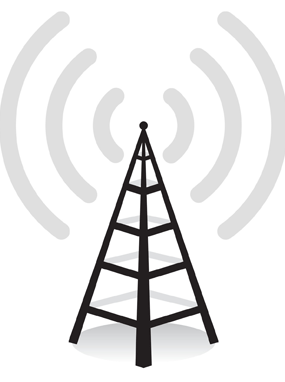
Wireless technology's next generation of products using the IEEE 802.11ac protocol will be able to
transmit data at speeds of more than 1 Gbit/s, according to Broadcom. At present, Wi-Fi Alliance officials expect that the 802.11ac standard will be ratified by the middle of 2012. If all goes as planned, we should start seeing wireless products that run on the standard by the end of next year. Devices running on 802.11ac will be operating in the 5-GHz range, which means that its efficiency will not be impeded by microwaves and wireless phones (as is sometimes the case with devices that operate in the 2.4-GHz range). Rahul Patel, vice president of the LAN connectivity business for Broadcom, said that in interference-free conditions the expected speed of the new standard with a router using a typical 3x3 antenna array and an 80-MHz channel would be 1.2 Gbit/s or slightly higher. Under similar conditions using 160-MHz channels, an 802.11n router can manage about 300 Mbit/s.
Why the need for more speed?
The 802.11n standard that we use at the moment is fast enough for current Internet speeds, but it is not really sufficient for heavier networking tasks like streaming high-definition video. Even something as seemingly mundane as printing can demonstrate the weakness in wireless throughput–plain text will print quickly, but printing a high-resolution photo can take a frustrating amount of time. For smartphones, faster speeds can benefit battery life, as the antenna only needs to be powered for a short period of time to receive data. Of course, a faster network does not really amount to much because your old laptop, with its 802.11n card, will only be able to connect at up to 300 Mbit/s. The new standard will find its way into higher-end equipment fairly quickly. At the middle and lower end, where manufacturers tend to sacrifice performance to keep costs down, 802.11n may have a little staying power.
 Wireless technology's next generation of products using the IEEE 802.11ac protocol will be able to transmit data at speeds of more than 1 Gbit/s, according to Broadcom. At present, Wi-Fi Alliance officials expect that the 802.11ac standard will be ratified by the middle of 2012. If all goes as planned, we should start seeing wireless products that run on the standard by the end of next year. Devices running on 802.11ac will be operating in the 5-GHz range, which means that its efficiency will not be impeded by microwaves and wireless phones (as is sometimes the case with devices that operate in the 2.4-GHz range). Rahul Patel, vice president of the LAN connectivity business for Broadcom, said that in interference-free conditions the expected speed of the new standard with a router using a typical 3x3 antenna array and an 80-MHz channel would be 1.2 Gbit/s or slightly higher. Under similar conditions using 160-MHz channels, an 802.11n router can manage about 300 Mbit/s.
Wireless technology's next generation of products using the IEEE 802.11ac protocol will be able to transmit data at speeds of more than 1 Gbit/s, according to Broadcom. At present, Wi-Fi Alliance officials expect that the 802.11ac standard will be ratified by the middle of 2012. If all goes as planned, we should start seeing wireless products that run on the standard by the end of next year. Devices running on 802.11ac will be operating in the 5-GHz range, which means that its efficiency will not be impeded by microwaves and wireless phones (as is sometimes the case with devices that operate in the 2.4-GHz range). Rahul Patel, vice president of the LAN connectivity business for Broadcom, said that in interference-free conditions the expected speed of the new standard with a router using a typical 3x3 antenna array and an 80-MHz channel would be 1.2 Gbit/s or slightly higher. Under similar conditions using 160-MHz channels, an 802.11n router can manage about 300 Mbit/s.
 Wireless technology's next generation of products using the IEEE 802.11ac protocol will be able to transmit data at speeds of more than 1 Gbit/s, according to Broadcom. At present, Wi-Fi Alliance officials expect that the 802.11ac standard will be ratified by the middle of 2012. If all goes as planned, we should start seeing wireless products that run on the standard by the end of next year. Devices running on 802.11ac will be operating in the 5-GHz range, which means that its efficiency will not be impeded by microwaves and wireless phones (as is sometimes the case with devices that operate in the 2.4-GHz range). Rahul Patel, vice president of the LAN connectivity business for Broadcom, said that in interference-free conditions the expected speed of the new standard with a router using a typical 3x3 antenna array and an 80-MHz channel would be 1.2 Gbit/s or slightly higher. Under similar conditions using 160-MHz channels, an 802.11n router can manage about 300 Mbit/s.
Wireless technology's next generation of products using the IEEE 802.11ac protocol will be able to transmit data at speeds of more than 1 Gbit/s, according to Broadcom. At present, Wi-Fi Alliance officials expect that the 802.11ac standard will be ratified by the middle of 2012. If all goes as planned, we should start seeing wireless products that run on the standard by the end of next year. Devices running on 802.11ac will be operating in the 5-GHz range, which means that its efficiency will not be impeded by microwaves and wireless phones (as is sometimes the case with devices that operate in the 2.4-GHz range). Rahul Patel, vice president of the LAN connectivity business for Broadcom, said that in interference-free conditions the expected speed of the new standard with a router using a typical 3x3 antenna array and an 80-MHz channel would be 1.2 Gbit/s or slightly higher. Under similar conditions using 160-MHz channels, an 802.11n router can manage about 300 Mbit/s.



